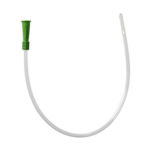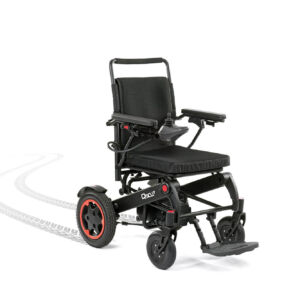The EasiCath® catheter is designed for intermittent catheterization without the use of additional gel – for men, women and children.
The holes (eyes) on the tip of the EasiCath® catheter are soft, rounded and covered with gel. This makes the catheter gentle on the urethral mucosa and the catheterization procedure more comfortable and safer.
Construction and working principle of the EasiCath® catheter
Thanks to modern technology, the EasiCath® catheter has been coated with a homogeneous coating that allows safer catheterization without the use of additional gel.
The coating layer consists of polyvinylpyrrolidone and urea.
After 30 seconds of immersion in water or saline, the coating layer of EasiCath® transforms into a homogeneous gel that allows it to be inserted gently and more safely into the urethra.
EasiCath®’s homogeneous coating layer gives the catheter smoothness and glide over the entire surface, significantly reducing friction between the catheter and the urethral mucosa.
Benefits of using
Security
- reduces friction between the catheter and the urethral mucosa
- reduces the risk of damage to the urethra
- reduces the risk of urinary tract infections
Convenience
- can be used without additional gel
- painless catheter insertion
- facilitated catheterization process
Indications
Clean intermittent catheterization is today the safest and most reliable method of emptying the bladder in people with urinary disorders. Such disorders occur when the nervous system does not control the process of urine excretion, such as after a spinal cord injury, in patients with multiple sclerosis or spina bifida, as well as in the case of disorders of other systems, such as the urinary system, such as prostate hypertrophy, bladder retention, urinary retention, etc.
Bladder catheterization should always be prescribed by a doctor and started after training by medical personnel.
Application instructions and precautions
The EasiCath® catheter is designed for clean intermittent catheterization without the use of additional gel for men, women and children.
Due to the difference in the anatomical structure of the urethra of men, women and children, there are different lengths of catheters to suit different needs.
If a child or teenager needs to be catheterized, parents or guardians should be taught the catheterization technique. At the age of 5-6, depending on the child’s skills, he can be taught the technique of self-catheterization.rtu and additional protection against skin irritation.woma fingers at the top and pulling the bag downward.
Coloplast
On request








